
NUCLEAR INSTRUMENTS & METHODS IN PHYSICS RESEARCH SECTION B-BEAM INTERACTIONS WITH MATERIALS AND ATOMS
metrics 2024
Innovating Techniques for High Energy Physics
Introduction
NUCLEAR INSTRUMENTS & METHODS IN PHYSICS RESEARCH SECTION B-BEAM INTERACTIONS WITH MATERIALS AND ATOMS, published by Elsevier, is a pivotal journal in the fields of nuclear and high energy physics as well as instrumentation. With an ISSN of 0168-583X and an E-ISSN of 1872-9584, this journal has been a significant contributor to the scientific community since its inception in 1983. Covering an extensive range of topics related to beam interactions with various materials and atoms, the journal serves as an essential resource for researchers, professionals, and students alike. It holds a respectable Q3 category ranking in both instrumentation and nuclear high energy physics as of 2023, indicating its relevance and quality within these domains. While the journal currently does not offer open access options, its invaluable findings are accessible through numerous academic libraries and institutions. With the publication's emphasis on fostering advancements in experimental techniques, instrumentation developments, and theoretical insights, it undoubtedly plays a crucial role in the ongoing progress and innovation in the field.
Metrics 2024
 0.37
0.37 1.40
1.40 1.30
1.30 131
131Metrics History
Rank 2024
Scopus
IF (Web Of Science)
JCI (Web Of Science)
Quartile History
Similar Journals
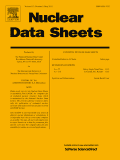
NUCLEAR DATA SHEETS
Unveiling the Universe: Data-Driven Insights in Nuclear Physics.NUCLEAR DATA SHEETS is a premier journal published by Academic Press Inc. Elsevier Science, dedicated to advancing the field of nuclear and high-energy physics. With an impressive impact factor and a distinguished Q2 ranking in the pertinent category as of 2023, this journal is recognized for its significant contributions to the synthesis and dissemination of nuclear data, serving as an essential resource for researchers, professionals, and students alike. The journal has been in continuous publication since 1971, making it a cornerstone of knowledge in the discipline as it converges into 2024. Researchers can explore a plethora of meticulously curated articles that cover the latest findings, theoretical advancements, and experimental results in nuclear data, with the objective of fostering collaboration and innovation within the scientific community. While currently not open access, its publications are accessible through institutional subscriptions, ensuring a wide reach amongst academic and research institutions worldwide. With a high Scopus rank of #10 out of 87 in its field, NUCLEAR DATA SHEETS remains an authoritative source that is instrumental in shaping the future of nuclear physics research.

Physical Review Accelerators and Beams
Bridging Theory and Experiment in Accelerator TechnologiesPhysical Review Accelerators and Beams, published by the American Physical Society, is a leading open-access journal dedicated to advancing the understanding of accelerators and beams, integral components of modern physics research. Established in 2016, this journal has quickly become a critical resource for researchers, professionals, and students in the fields of Nuclear and High Energy Physics, and Physics and Astronomy. The journal boasts a commendable impact factor and has achieved a Q2 ranking in reputable categories, reflecting its significant contribution to the field. With a commitment to open access, scholars can freely access a wealth of high-quality research articles that not only report on technological advancements but also explore novel experimental techniques and theoretical frameworks. The journal’s interdisciplinary approach and emphasis on rigorous peer-reviewed research make it an essential platform for disseminating innovative ideas, thus driving forward the frontiers of particle acceleration and related technologies. Located at One Physics Ellipse, College Park, MD 20740-3844, United States, it continues to cultivate a vibrant scientific community.

Radiation Detection Technology and Methods
Bridging Theory and Application in Nuclear PhysicsRadiation Detection Technology and Methods is a prominent academic journal published by Springer Singapore Pte Ltd, dedicated to advancing the field of nuclear and high-energy physics, as well as nuclear energy and engineering. Established in 2017, this journal provides a platform for the dissemination of pioneering research and innovative methodologies in radiation detection technology. As of 2023, it holds a commendable Q2 ranking in both the categories of Nuclear and High Energy Physics and Nuclear Energy and Engineering, underscoring its significance in fostering scholarly discourse within these vital fields. With ISSN 2509-9930 and E-ISSN 2509-9949, the journal aims to cater to a diverse audience of researchers, professionals, and students, emphasizing open access to knowledge. The journal's contributions are particularly crucial for those engaged in the development of safer and more efficient radiation detection techniques, ultimately bridging the gap between theory and practical applications in energy security and health physics. For researchers seeking a dedicated outlet for their work, Radiation Detection Technology and Methods represents an invaluable resource and an opportunity to influence the future of radiation science.
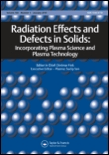
Radiation Effects and Defects in Solids
Advancing Knowledge in Radiation Effects and DefectsRadiation Effects and Defects in Solids is a prestigious academic journal published by TAYLOR & FRANCIS LTD that has been at the forefront of research related to the impacts of radiation on various solid materials since its inception in 1989. With an ISSN of 1042-0150 and an E-ISSN of 1029-4953, this journal serves as an essential resource for researchers and professionals in the fields of Condensed Matter Physics, Materials Science, and Nuclear and High Energy Physics. Despite its current categorization in the Q4 quartile across these disciplines, Radiation Effects and Defects in Solids remains critical for advancing knowledge of material responses to radiation, which is vital for applications in nuclear energy, space exploration, and radiation therapy. The journal publishes original research articles, reviews, and letters that provide insights into material properties, radiation dosimetry, and defect structures, fostering collaboration and innovation within the scientific community. As the field evolves, Radiation Effects and Defects in Solids continues to play a significant role in disseminating valuable research findings and keeping pace with emerging trends in materials science and radiation physics.
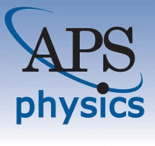
PHYSICAL REVIEW C
Defining Excellence in Nuclear Physics ScholarshipPHYSICAL REVIEW C is an esteemed journal published by the American Physical Society, dedicated to advancing knowledge in the fields of nuclear and high-energy physics. With a proud ISSN of 2469-9985 and an E-ISSN of 2469-9993, it has established itself as a leading journal, currently ranked in the Q1 category for its field in 2023, positioning itself in the top tier of scholarly publications. Based in the heart of the United States, at One Physics Ellipse, College Park, MD, PHYSICAL REVIEW C is known for its rigorous peer-review process and is a vital platform for researchers to share their pioneering findings. As part of a prestigious lineup backed by an impressive impact factor, this journal garners significant attention, reflected in its Scopus ranking as #18 out of 87 in the Nuclear and High Energy Physics category, placing it within the 79th percentile. While it currently does not offer open access options, it remains an essential resource for professionals and students seeking to deepen their understanding of nuclear interactions, reaction dynamics, and the fundamental principles governing subatomic particles. The convergence of innovative research from 2016 to 2024 makes it a timely reservoir for groundbreaking studies, thus reinforcing its importance in the scientific community.
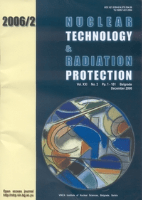
Nuclear Technology & Radiation Protection
Connecting scholars for a safer nuclear landscape.Nuclear Technology & Radiation Protection is a distinguished open-access journal published by the VINCA Institute of Nuclear Sciences, Serbia, dedicated to advancing knowledge in the fields of nuclear energy and radiation safety. Since its inception in 2002, the journal has been an essential resource for researchers, professionals, and students, offering a platform for the dissemination of high-quality research that contributes to the safe and efficient use of nuclear technology. With an impressive Q2 ranking in both the Nuclear Energy and Engineering and Safety, Risk, Reliability and Quality categories for 2023, the journal reflects a commitment to excellence and relevance within its scope. It serves as a pivotal forum for sharing innovative findings, addressing current challenges, and contributing to the global discourse on nuclear safety and technology. The journal is indexed in Scopus, enhancing its visibility and impact in the academic community. By facilitating unrestricted access to its articles, Nuclear Technology & Radiation Protection continues to foster collaboration and engagement among scholars in the nuclear science domain.
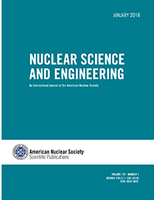
NUCLEAR SCIENCE AND ENGINEERING
Exploring the Future of Nuclear ScienceNUCLEAR SCIENCE AND ENGINEERING, published by Taylor & Francis Inc, is a leading journal in the field of nuclear energy and engineering, providing a vital platform for disseminating cutting-edge research and advancements from both academia and industry. With an ISSN of 0029-5639 and an E-ISSN of 1943-748X, the journal boasts a notable impact factor and is categorized in the Q2 quartile for 2023, reflecting its influence and quality in the field. Covering a comprehensive scope from the inception of nuclear technology in 1969 to contemporary advancements forecasted for 2024, it ranks #38 out of 77 in the Scopus Energy – Nuclear Energy and Engineering category, placing it in the 51st percentile. Although the journal is not open access, it remains essential for researchers, professionals, and students seeking to stay abreast of the latest developments and innovations in nuclear science. Located in the heart of Philadelphia, NUCLEAR SCIENCE AND ENGINEERING contributes significantly to the advancement of nuclear engineering knowledge and practice, making it a crucial resource for anyone involved in this dynamic field.

ATOMIC DATA AND NUCLEAR DATA TABLES
Advancing knowledge in atomic and nuclear physics.ATOMIC DATA AND NUCLEAR DATA TABLES, published by Academic Press Inc Elsevier Science, is a leading journal in the fields of atomic and molecular physics, as well as nuclear and high energy physics. With an ISSN of 0092-640X and an E-ISSN of 1090-2090, this esteemed journal has been providing comprehensive data tables and significant research insights since its establishment in 1969. Spanning until 2024, it continues to serve as an invaluable resource for researchers and professionals aiming to deepen their understanding of atomic interactions and nuclear processes. Holding a commendable Q2 ranking in both relevant categories, it is recognized for its impact, reflected in Scopus rankings, where it ranks 25th out of 87 in Nuclear and High Energy Physics, and 87th out of 224 in Atomic and Molecular Physics. While it does not offer open access, the journal remains a crucial repository for high-quality data essential for scientific endeavors and advancements in these complex fields.

Journal of Condensed Matter Nuclear Science
Advancing Knowledge at the Intersection of Physics and Energy.The Journal of Condensed Matter Nuclear Science, published by the International Society for Condensed Matter Nuclear Science in the United Kingdom, serves as a pivotal platform for researchers exploring the intersections of condensed matter physics and nuclear science. With an ISSN of 2227-3123, this journal has been actively contributing to the academic discourse from its inception in 2016 through its latest volume in 2022. Although classified in Q4 quartiles across various categories, including Atomic and Molecular Physics, Condensed Matter Physics, and Nuclear Energy and Engineering, the journal provides a unique lens on innovative approaches and perspectives that could significantly impact future research directions. This open-access journal appeals to an audience keen on investigating the theoretical and experimental aspects of condensed matter nuclear science, fostering a collaborative environment for scientists, engineers, and students alike. By advancing discussions in this niche field, it aims to attract attention and inspire groundbreaking discoveries that underpin the evolving landscape of nuclear energy and applications.
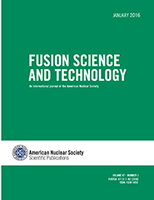
FUSION SCIENCE AND TECHNOLOGY
Pioneering breakthroughs in fusion technology for a brighter tomorrow.FUSION SCIENCE AND TECHNOLOGY is a leading peer-reviewed journal published by Taylor & Francis Inc., dedicated to the advancement of knowledge in the fields of nuclear science, engineering, and fusion technology. With an impact factor that reflects its growing significance, this journal provides a platform for innovative research that addresses the challenges and opportunities within Civil and Structural Engineering, Materials Science, Mechanical Engineering, and Nuclear Energy and Engineering. Its open access option facilitates wider dissemination of groundbreaking research, enhancing visibility and accessibility for researchers, professionals, and students alike. As a member of the Q2 and Q3 Quartiles across various categories—demonstrating its reputable standing among peers—the journal plays a crucial role in fostering collaboration and sharing the latest scientific discoveries in fusion and related technologies from 2001 until 2024. This makes it an essential resource for anyone engaged in the multidisciplinary aspects of fusion science, contributing to the development of sustainable energy solutions.